A data architect needs to load Table_A from an Excel file and sort the data by Field_2.
Which script should the data architect use?
A)
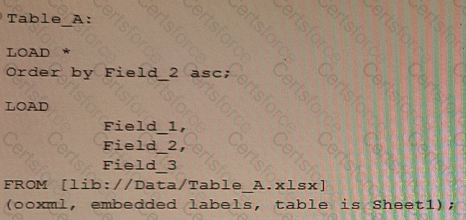
B)

C)
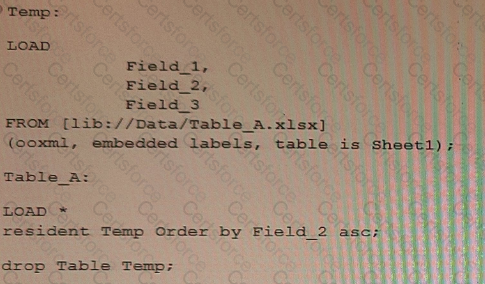
D)
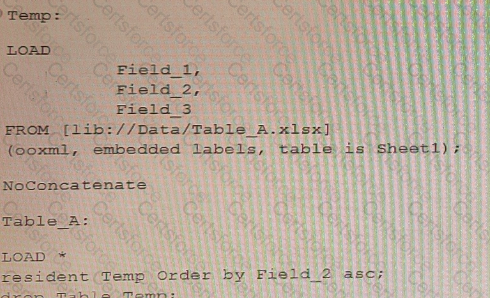
Refer to the exhibit.
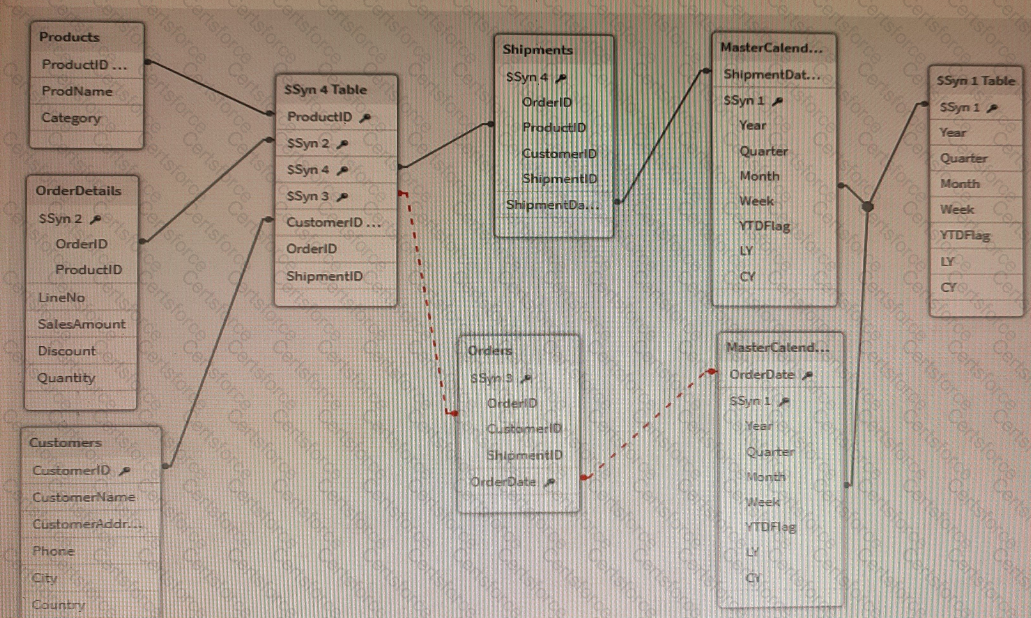
A data architect is working on a Qlik Sense app the business has created to analyze the company orders and shipments. To understand the table structure, the business has given the following summary:
• Every order creates a unique orderlD and an order date in the Orders table
• An order can contain one or more order lines one for each product ID in the order details table
• Products in the order are shipped (shipment date) as soon as tliey are ready and can be shipped separately
• The dates need to be analyzed separately by Year Month, and Quarter
The data architect realizes the data model has issues that must be fixed.
Which steps should the data architect perform?

A company has different departments. Executive and Sales should always be the first values in aDepartment filter pane. Which script must the data architect use to meet this requirement?
A)

B)
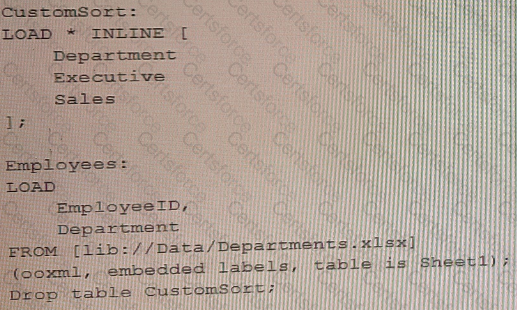
C)
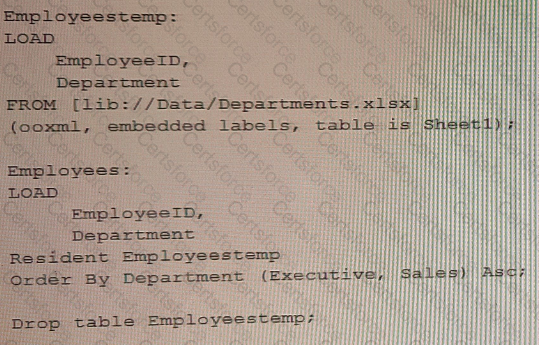
D)

A data architect is building a model to show trends in visualizations across seven date fields. The seven date fields reside in different tables. The data architect must efficiently build this data model.
Requirements:
• A single date selector
• Show all dates, even those with NO activity
• Minimize the impact on server resources and p
Which two solutions should the data architect use? (Select two.)

Refer to the exhibit
A data architect is working on an app that contains orders, invoices, and shipping data. There are three different date fields within the data:
* OrderDate
* InvoiceDate
* ShippingDate
The business analyst needs to replicate the chart above to show Order and Shipping amounts on the same Month axis.
What should the data architect do?
Refer to the exhibits.
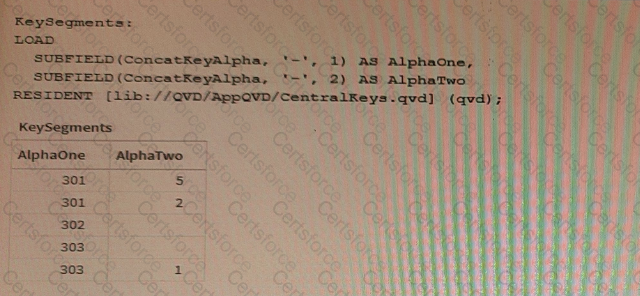
While debugging an app, a developer loads data from an application layer QVD file.
In the process of separating a concatenated key into two parts, some split results are missing data
What should the data architect do?
Multiple department fields in a dataset require a description
A data architect needs to add the department descriptions or a default value when the department does NOT have a description
Which strategy should the data architect use to meet these requirements?
A data architect executes the following script:

What will Field_1 contain after this script is executed?
Refer to the exhibit.
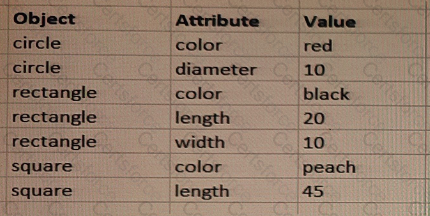
While performing a data load from the source shown, the data architect notices it is NOT appropriate for the required analysis.
The data architect runs the following script to resolve this issue:

A data architect needs to load data from two different databases Additional data will be added from a folder that contains QVDs. text files, and Excel files.
What is the minimum number of data connections required?